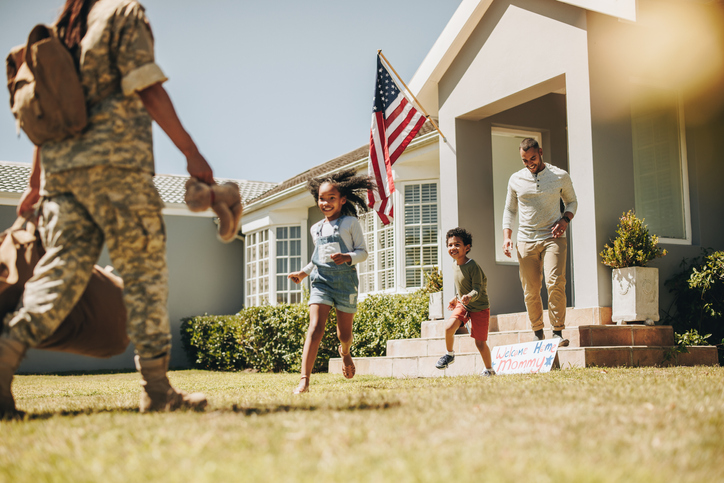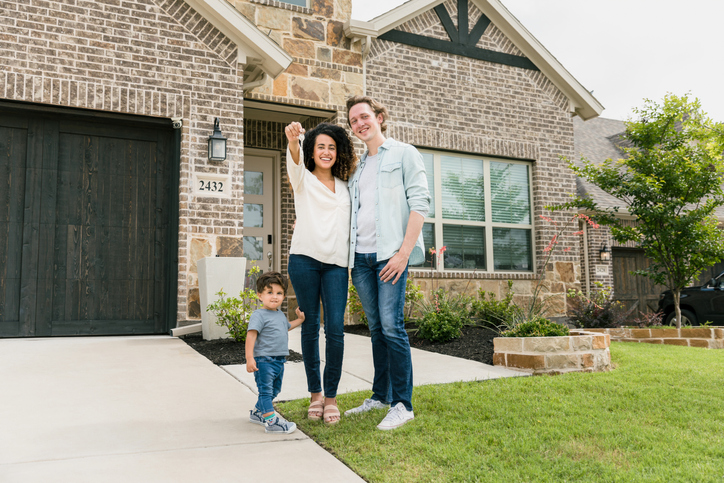Can The VA Loan be Used More than Once?
The VA loan is a remarkable benefit, offering a helping hand to those who have served our nation in securing a piece of the American dream: homeownership. But is this advantage a one-time deal, or can veterans tap into this resource more than once?
Here are the key points regarding the reuse of VA loans:
You can use a VA loan multiple times as long as you have remaining entitlement.
This means that you can obtain another VA loan after using one previously, without any set limit on the number of times you can do so.
It is even possible to have more than one VA loan simultaneously under certain circumstances, such as active service members who receive Permanent Change of Station (PCS) orders and want to keep their current home while purchasing a new one. Additionally, expanding family needs, such as requiring more space, can also warrant the concurrent use of another VA loan to secure a larger home.
Eligible veterans can restore and reuse their VA loan entitlement multiple times. This means that if you’ve paid off your previous VA loan or if the home was sold and the loan was fully assumed by another veteran, you can apply to have your full entitlement restored for another VA loan.
To use your VA loan again, you will need to ensure that you meet the lender’s qualifications each time you apply for a new loan.
Common Scenarios for Reusing VA Loan Benefits
Veterans may find themselves in various life situations where reusing their VA loan benefits becomes a practical or necessary decision.
- Permanent Change of Station (PCS): Military service often requires relocation. When PCS orders come through, service members may need to purchase a home in a new location while retaining their current residence.
- Upsizing for a Growing Family: Life changes such as the addition of children might necessitate a move to a larger home, prompting the use of VA loan benefits to accommodate the increased space requirements.
- Moving Without Selling: Sometimes a veteran may choose or need to move to a new home before selling their previous one. In such cases, a second VA loan can be used to purchase the new residence if the first is still in the repayment phase.
- Career Transition: After military service, veterans may embark on new careers that necessitate relocation to areas with more opportunities in their chosen fields.
- Aging in Place: Older veterans may seek to downsize or move closer to family members or healthcare facilities, utilizing their benefits to secure a home that better suits their changing needs.
- Divorce or Separation: Veterans may need to find a new home due to changes in their marital status.
- Rental Investment: After occupying a VA loan-financed property as a primary residence, veterans may move and rent out their original home, using their remaining entitlement for a new residence.
- Retirement: Veterans might move upon retirement, seeking a new home that better fits their lifestyle or to be in a more desirable climate.
- Geographic Preference: A desire to live in a different region or closer to certain amenities, like a university or the outdoors, might motivate a veteran to use their entitlement again.
The Process of Reusing Your VA Loan
The journey to securing a second home with a VA loan begins with understanding your remaining entitlement. Often, veterans believe once they’ve used their VA loan benefit, it’s depleted. However, this is a renewable resource under certain conditions. To reuse your benefit, the first step is to obtain a new Certificate of Eligibility (COE), which reflects your remaining entitlement and confirms your eligibility for additional VA-backed financing.

To calculate your remaining entitlement, you’ll need to consider the amount initially allotted and what portion you’ve already used. This calculation can be complex, especially if you haven’t sold your previous home financed by a VA loan. In that case, the VA allows for a one-time restoration of entitlement, provided the first loan is paid in full and the property is no longer owned by you. Information on how to calculate the entitlement is in the next section.
The application process mirrors that of your first VA loan, but with added scrutiny on your current financial status. Lenders will review your credit score, debt-to-income ratio, and assess any changes in your financial situation since your last VA loan was approved. They will also verify that you meet all other VA loan requirements, such as sufficient income and suitable credit.
Navigating through these steps can be streamlined with the assistance of a lender, who can advise you on the best course of action based on your specific circumstances. Whether it’s your second home purchase or your third, the VA loan remains a viable path to homeownership, offering the same benefits and support each time you use it.
Understanding Basic and Bonus (Secondary) Entitlement.
When veterans and active-duty service members first look into a VA loan, they’re introduced to the concept of ‘entitlement’. But what does this mean? Entitlement is the amount the Department of Veterans Affairs guarantees on your loan, giving lenders confidence to offer you financing with no down payment and favorable terms.
Basic Entitlement
The basic entitlement is set by the VA and, currently stands at $36,000. This means the VA guarantees a quarter of the loan amount up to $144,000 — a quarter of $36,000. For loans exceeding this amount, the VA will guarantee 25% of the loan limit for the county in which the property is located.
Bonus (Secondary) Entitlement
Bonus entitlement, or secondary entitlement, comes into play in costlier housing markets where the basic entitlement isn’t enough to cover the VA loan limit. This additional entitlement can be used in conjunction with the basic entitlement to purchase homes above the $144,000 mark.
To put it in perspective, if you live in a county where the loan limit is $548,250, you have a total entitlement amount of $137,062.50 ($548,250 x 25%). If you’ve used $36,000 of entitlement on a previous loan, you still have $101,062.50 available.
Understanding these entitlements is crucial because they affect how much you can borrow before needing to make a down payment. This plays a significant role when considering the reuse of your VA loan benefits. Whether you’re purchasing a home that falls within the basic entitlement range or one that requires tapping into your secondary entitlement, knowing how these figures work together can help you maximize your VA loan benefits.
Remember, even if you have used your entire basic entitlement, you don’t necessarily have to make a down payment on a new loan if your secondary entitlement covers the entire loan amount. Each situation is unique, and a knowledgeable VA loan officer can help you understand how much entitlement you have and how you can use it for your next home purchase.
How Entitlement is Utilized During the VA Loan Process
Entitlement plays a pivotal role in the VA loan process, acting as a financial guarantor for lenders.
Here’s how it’s integrated into the journey of securing a VA loan:
VA Loan Application and Approval
During the application, lenders will request your Certificate of Eligibility (COE) to verify your entitlement. The COE details how much entitlement you have and if any portion has been used. Lenders use this information to calculate the maximum VA loan amount they can offer you.
During Home Purchase
When you find a home and are ready to use your VA loan, your entitlement will count towards the guarantee portion of the loan. This guarantee gives lenders the assurance needed to provide favorable loan terms, such as zero down payment and no private mortgage insurance (PMI).
After Home Purchase
If you’ve used less than your full entitlement and wish to purchase another home, the remaining entitlement can be used towards another VA loan. Having sufficient entitlement does not automatically qualify you for another loan; lenders will still assess your credit, income, and other factors during the approval process.
How to Use Your VA Loan Benefit Again
If you’re ready to take advantage of your VA loan benefits again, follow these steps to navigate the application process smoothly
Connect with a VA Loan Specialist
A lender experienced in VA loans can guide you through the intricacies of applying for a second VA loan and help you understand your remaining entitlement and any additional qualifications required
Submit an application for the VA loan
This preliminary step gives you an idea of how much you might be able to borrow and affirms your eligibility, which is particularly helpful when house hunting.
Obtain a VA pre-approval letter
After submitting an application, request a pre-approval letter, which is a more formal indication of your ability to secure financing and is helpful when making offers on homes.
Documentation Required for a Subsequent VA Loan
When applying for a subsequent VA loan, you’ll need to gather a set of documents to verify your eligibility and financial status.
- Loan Application: You’ll fill out this standard form with details about your finances, employment, assets and the property if applicable.
- Credit Report: Lenders will pull this, but you’ll need to provide consent. It should reflect your current debts and credit history.
- Government-Issued ID: A driver’s license or other government-issued identification to verify your identity.
- Proof of Income: Recent pay stubs, tax returns, and W-2s for the last two years to confirm your income stability.
- Proof of Assets: Bank statements and investment account statements to demonstrate you have funds for closing costs and cash reserves if necessary.
- Statement of Service: For active military members, this document proves your service status and commitment length.
- Other Documents: Depending on your circumstances, you may also need to provide additional documents such as a copy of your DD-214 for discharged veterans, documentation of any additional income (like rental income or alimony), and more.







